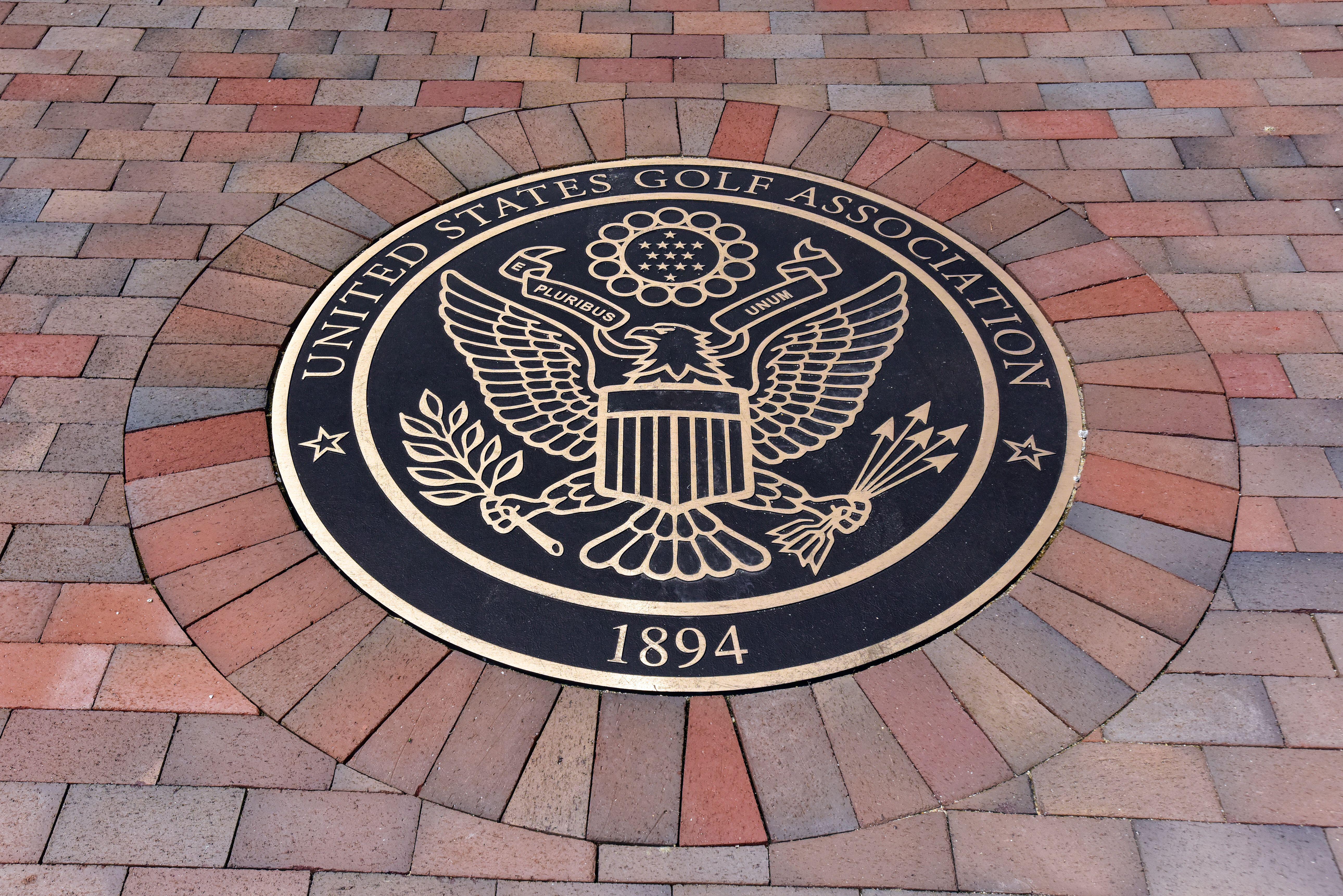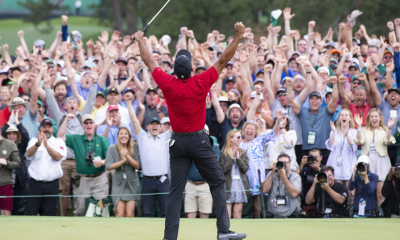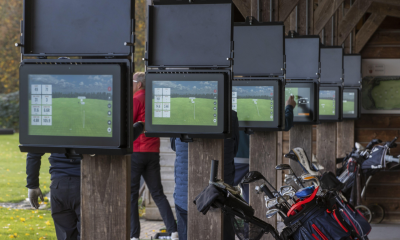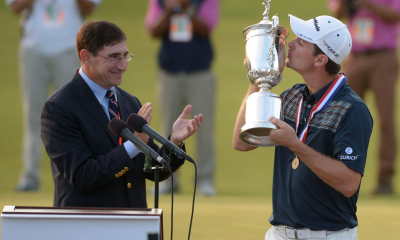Opinion & Analysis
My Take: Bridging the gap – Navigating golf’s distance dilemma in professional and amateur play

Golf is deeply steeped in tradition yet has constantly evolved since its inception centuries ago. From early years when players wielded wooden clubs and feather-stuffed balls, the advent of technology has propelled the game to new heights—or distances, to be precise. In the modern game, the “distance issue” in golf has prompted urgent conversations initiated mainly through the United States Golf Association (USGA) and the R&A. These governing bodies see potential detriments to the game caused by the ever-increasing distances, primarily at the professional level, that players hit the ball. While their initiative for universal rule changes seems well-intentioned, exploring the possibility of bifurcation—one set of rules for professionals and another for amateurs—could address this intricate issue more effectively.
The Argument for Regulation
The genuine concern over the game’s sustainability is at the heart of the USGA and R&A’s proposed regulations. With modern players achieving extraordinary distances, the integrity of classic courses, many of which have hosted majors since time immemorial, faces genuine risk. Courses may need continual redesigns, encroaching both environmentally and economically. The relentless pursuit of longer drives also overshadows the traditional emphasis on skill, accuracy, and strategy that makes golf so revered. These valid concerns prompt the suggested mandates on equipment modifications, such as reduced-flight balls, aimed at curbing these excessive distances.
The Case for Bifurcation
However, the singular approach of applying such rules universally across professional and amateur ranks has stirred debate. Many have questioned whether this one-size-fits-all method overlooks the inherent differences in the abilities and needs of these distinct golfing communities. Herein lies the crux of the bifurcation argument, a potential solution that merits serious consideration.
Why Bifurcation?
Every weekend, the average amateur golfer steps onto the course, eager to emulate their professional heroes, harnessing every inch of technology available to enjoy the thrill of hitting long drives, even if they don’t consistently hit 300-yard drives like the pros. For amateurs, who play primarily for enjoyment rather than competition at the highest level, the significant changes in equipment rules may become a barrier to fun. The essence of recreational play lies in personal improvements, the satisfaction of mastering one’s own game, and enjoying enhanced shot-making capabilities offered by modern technology. Limiting these experiences with stringent changes could detract from the accessibility and appeal of the sport.

Balancing Professional and Amateur Needs
On the other hand, targeted regulations could greatly benefit professionals whose livelihoods depend on performance. Bifurcation would allow the introduction of specific equipment standards designed to enhance course integrity and competitiveness at the elite level without diminishing the amateur game. By instituting separate sets of parameters, we could preserve the spirit of competition among professionals and foster ongoing public interest and investment in golf’s future.
Challenges and Considerations
Bifurcation would not be without challenges, particularly around logistical aspects such as defining categories and ensuring compliance across global competitions. However, the golf community and its regulatory bodies have demonstrated remarkable adaptability in the past. Golf can navigate this complexity by embracing open, ongoing dialogues between manufacturers, governing factions, and players. Establishing a clear framework that evolves with player statistics and technological innovations will help strike a balance between advancing the sport and safeguarding its roots.
A Path Forward
The distance debate presents a pivotal moment for golf, demanding nuanced solutions that honor both its competitive spirit and recreational enjoyment. The USGA and R&A’s commitment to addressing these complexities is commendable, and their work certainly lays a critical foundation for ongoing discourse. Yet, within this evolving landscape, a tailored approach through rule bifurcation seems a promising path forward. By recognizing the distinct needs of professional and amateur players, golf can continue to flourish, ensuring it retains its richness not just as a game but as a cherished tradition shared across generations. Let’s harness this moment to bridge the gap, ensuring the game thrives in all its forms for years to come.
Reader, please support me by checking out my three weekly columns on RG.org. On Mondays, I present “The Starter,” which recaps the week gone by in golf. On Wednesdays, I give you “Fairway Focus,” which previews the week to come in golf. And on Fridays, I dish up the “Friday Fore-cast,” a look at what’s on tap for the upcoming weekend.
Editor’s note: “My Take” will be an ongoing weekly series where Brendon shares his thoughts and opinions on various aspects of the game and industry. These are Brendon’s opinions and do not necessarily reflect those of GolfWRX, its staff, and its affiliates.
Opinion & Analysis
The 2 primary challenges golf equipment companies face

As the editor-in-chief of this website and an observer of the GolfWRX forums and other online golf equipment discourse for over a decade, I’m pretty well attuned to the grunts and grumbles of a significant portion of the golf equipment purchasing spectrum. And before you accuse me of lording above all in some digital ivory tower, I’d like to offer that I worked at golf courses (public and private) for years prior to picking up my pen, so I’m well-versed in the non-degenerate golf equipment consumers out there. I touched (green)grass (retail)!
Complaints about the ills of and related to the OEMs usually follow some version of: Product cycles are too short for real innovation, tour equipment isn’t the same as retail (which is largely not true, by the way), too much is invested in marketing and not enough in R&D, top staffer X hasn’t even put the new driver in play, so it’s obviously not superior to the previous generation, prices are too high, and on and on.
Without digging into the merits of any of these claims, which I believe are mostly red herrings, I’d like to bring into view of our rangefinder what I believe to be the two primary difficulties golf equipment companies face.
One: As Terry Koehler, back when he was the CEO of Ben Hogan, told me at the time of the Ft Worth irons launch, if you can’t regularly hit the golf ball in a coin-sized area in the middle of the face, there’s not a ton that iron technology can do for you. Now, this is less true now with respect to irons than when he said it, and is less and less true by degrees as the clubs get larger (utilities, fairways, hybrids, drivers), but there remains a great deal of golf equipment truth in that statement. Think about it — which is to say, in TL;DR fashion, get lessons from a qualified instructor who will teach you about the fundamentals of repeatable impact and how the golf swing works, not just offer band-aid fixes. If you can’t repeatably deliver the golf club to the golf ball in something resembling the manner it was designed for, how can you expect to be getting the most out of the club — put another way, the maximum value from your investment?
Similarly, game improvement equipment can only improve your game if you game it. In other words, get fit for the clubs you ought to be playing rather than filling the bag with the ones you wish you could hit or used to be able to hit. Of course, don’t do this if you don’t care about performance and just want to hit a forged blade while playing off an 18 handicap. That’s absolutely fine. There were plenty of members in clubs back in the day playing Hogan Apex or Mizuno MP-32 irons who had no business doing so from a ballstriking standpoint, but they enjoyed their look, feel, and complementary qualities to their Gatsby hats and cashmere sweaters. Do what brings you a measure of joy in this maddening game.
Now, the second issue. This is not a plea for non-conforming equipment; rather, it is a statement of fact. USGA/R&A limits on every facet of golf equipment are detrimental to golf equipment manufacturers. Sure, you know this, but do you think about it as it applies to almost every element of equipment? A 500cc driver would be inherently more forgiving than a 460cc, as one with a COR measurement in excess of 0.83. 50-inch shafts. Box grooves. And on and on.
Would fewer regulations be objectively bad for the game? Would this erode its soul? Fortunately, that’s beside the point of this exercise, which is merely to point out the facts. The fact, in this case, is that equipment restrictions and regulations are the slaughterbench of an abundance of innovation in the golf equipment space. Is this for the best? Well, now I’ve asked the question twice and might as well give a partial response, I guess my answer to that would be, “It depends on what type of golf you’re playing and who you’re playing it with.”
For my part, I don’t mind embarrassing myself with vintage blades and persimmons chasing after the quasi-spiritual elevation of a well-struck shot, but that’s just me. Plenty of folks don’t give a damn if their grooves are conforming. Plenty of folks think the folks in Liberty Corner ought to add a prison to the museum for such offences. And those are just a few of the considerations for the amateur game — which doesn’t get inside the gallery ropes of the pro game…
Different strokes in the game of golf, in my humble opinion.
Anyway, I believe equipment company engineers are genuinely trying to build better equipment year over year. The marketing departments are trying to find ways to make this equipment appeal to the broadest segment of the golf market possible. All of this against (1) the backdrop of — at least for now — firm product cycles. And golfers who, with their ~15 average handicap (men), for the most part, are not striping the golf ball like Tiger in his prime and seem to have less and less time year over year to practice and improve. (2) Regulations that massively restrict what they’re able to do…
That’s the landscape as I see it and the real headwinds for golf equipment companies. No doubt, there’s more I haven’t considered, but I think the previous is a better — and better faith — point of departure when formulating any serious commentary on the golf equipment world than some of the more cynical and conspiratorial takes I hear.
Agree? Disagree? Think I’m worthy of an Adam Hadwin-esque security guard tackle? Let me know in the comments.
@golfoncbs The infamous Adam Hadwin tackle ? #golf #fyp #canada #pgatour #adamhadwin ? Ghibli-style nostalgic waltz – MaSssuguMusic
Podcasts
Fore Love of Golf: Introducing a new club concept

Episode #16 brings us Cliff McKinney. Cliff is the founder of Old Charlie Golf Club, a new club, and concept, to be built in the Florida panhandle. The model is quite interesting and aims to make great, private golf more affordable. We hope you enjoy the show!
Opinion & Analysis
On Scottie Scheffler wondering ‘What’s the point of winning?’

Last week, I came across a reel from BBC Sport on Instagram featuring Scottie Scheffler speaking to the media ahead of The Open at Royal Portrush. In it, he shared that he often wonders what the point is of wanting to win tournaments so badly — especially when he knows, deep down, that it doesn’t lead to a truly fulfilling life.
View this post on Instagram
“Is it great to be able to win tournaments and to accomplish the things I have in the game of golf? Yeah, it brings tears to my eyes just to think about it because I’ve literally worked my entire life to be good at this sport,” Scheffler said. “To have that kind of sense of accomplishment, I think, is a pretty cool feeling. To get to live out your dreams is very special, but at the end of the day, I’m not out here to inspire the next generation of golfers. I’m not out here to inspire someone to be the best player in the world, because what’s the point?”
Ironically — or perhaps perfectly — he went on to win the claret jug.
That question — what’s the point of winning? — cuts straight to the heart of the human journey.
As someone who’s spent over two decades in the trenches of professional golf, and in deep study of the mental, emotional, and spiritual dimensions of the game, I see Scottie’s inner conflict as a sign of soul evolution in motion.
I came to golf late. I wasn’t a junior standout or college All-American. At 27, I left a steady corporate job to see if I could be on the PGA Tour starting as a 14-handicap, average-length hitter. Over the years, my journey has been defined less by trophies and more by the relentless effort to navigate the deeply inequitable and gated system of professional golf — an effort that ultimately turned inward and helped me evolve as both a golfer and a person.
One perspective that helped me make sense of this inner dissonance around competition and our culture’s tendency to overvalue winning is the idea of soul evolution.
The University of Virginia’s Division of Perceptual Studies has done extensive research on reincarnation, and Netflix’s Surviving Death (Episode 6) explores the topic, too. Whether you take it literally or metaphorically, the idea that we’re on a long arc of growth — from beginner to sage elder — offers a profound perspective.
If you accept the premise literally, then terms like “young soul” and “old soul” start to hold meaning. However, even if we set the word “soul” aside, it’s easy to see that different levels of life experience produce different worldviews.
Newer souls — or people in earlier stages of their development — may be curious and kind but still lack discernment or depth. There is a naivety, and they don’t yet question as deeply, tending to see things in black and white, partly because certainty feels safer than confronting the unknown.
As we gain more experience, we begin to experiment. We test limits. We chase extreme external goals — sometimes at the expense of health, relationships, or inner peace — still operating from hunger, ambition, and the fragility of the ego.
It’s a necessary stage, but often a turbulent and unfulfilling one.
David Duval fell off the map after reaching World No. 1. Bubba Watson had his own “Is this it?” moment with his caddie, Ted Scott, after winning the Masters.
In Aaron Rodgers: Enigma, reflecting on his 2011 Super Bowl win, Rodgers said:
“Now I’ve accomplished the only thing that I really, really wanted to do in my life. Now what? I was like, ‘Did I aim at the wrong thing? Did I spend too much time thinking about stuff that ultimately doesn’t give you true happiness?’”
Jim Carrey once said, “I think everybody should get rich and famous and do everything they ever dreamed of so they can see that it’s not the answer.”
Eventually, though, something shifts.
We begin to see in shades of gray. Winning, dominating, accumulating—these pursuits lose their shine. The rewards feel more fleeting. Living in a constant state of fight-or-flight makes us feel alive, yes, but not happy and joyful.
Compassion begins to replace ambition. Love, presence, and gratitude become more fulfilling than status, profits, or trophies. We crave balance over burnout. Collaboration over competition. Meaning over metrics.
Interestingly, if we zoom out, we can apply this same model to nations and cultures. Countries, like people, have a collective “soul stage” made up of the individuals within them.
Take the United States, for example. I’d place it as a mid-level soul: highly competitive and deeply driven, but still learning emotional maturity. Still uncomfortable with nuance. Still believing that more is always better. Despite its global wins, the U.S. currently ranks just 23rd in happiness (as of 2025). You might liken it to a gifted teenager—bold, eager, and ambitious, but angsty and still figuring out how to live well and in balance. As much as a parent wants to protect their child, sometimes the child has to make their own mistakes to truly grow.
So when Scottie Scheffler wonders what the point of winning is, I don’t see someone losing strength.
I see someone evolving.
He’s beginning to look beyond the leaderboard. Beyond metrics of success that carry a lower vibration. And yet, in a poetic twist, Scheffler did go on to win The Open. But that only reinforces the point: even at the pinnacle, the question remains. And if more of us in the golf and sports world — and in U.S. culture at large — started asking similar questions, we might discover that the more meaningful trophy isn’t about accumulating or beating others at all costs.
It’s about awakening and evolving to something more than winning could ever promise.






















is1ander
Jan 4, 2025 at 2:31 pm
Average recreational golfers who drive 180 yd – 220 yd are not going to notice 5 yd shorter drives. If you’re hitting it 300, no one will shed a tear if you’re now hitting it 285. One set of rules, roll back the equipment, check your darn ego. The universe does not revolve around you. You don’t get special rules. Golf is hard. Enjoy the challenge.
Brett
Jan 3, 2025 at 6:43 am
Almost every other sport has different rules for amateurs and pros, so I’m fine with bifurcation. Ken Griffey JR would’ve hit 900 home runs with an aluminum bat!
Will Dutton
Jan 2, 2025 at 11:16 pm
if there was some way to make the pros find their own balls, I think it would change things quite a lot. The fact they have search committees and fans, so they know exactly where their balls have gone, changes the game more than anything between amateurs and professionals.
John
Jan 2, 2025 at 12:02 pm
Nice article. Bifurcation makes complete sense. Golf is out of wack at the elite level. It’s the smart thing to do.
Karsten's Ghost
Jan 1, 2025 at 7:07 pm
Bifurcation is awful. Make them play low compression balls if you think that’s needed, but get stuffed. Don’t ruin the game.
Evan
Jan 1, 2025 at 5:36 pm
Bifurcation doesn’t merit serious consideration- it is simply a terrible idea. A bad solution to a nonexistent problem.
Nicky Bear
Dec 31, 2024 at 9:42 pm
I would just like to take a moment to thank Jack Nicklaus. The Golden Bear with the support of his wife Barbara has wanted the golf ball to go shorter for many many moons. Jack’s steadfast and unwavering determination to make this happen is admirable. Jack and Barbara have a wonderful Happy New Year!!!
The USGA sucks
Jan 1, 2025 at 7:11 pm
Jack was one of the beneficiaries.of distance. Ironic…
Just make them play conforming but low-compression balls, and move on.
WSinTX
Dec 31, 2024 at 3:10 pm
One sport, one set of rules. I hate the idea of different rules for pros vs amateurs. We should all be playing from the same rulebook.
Keep building tee boxes further back for the pros and making misses more penalizing. Women and men and short hitters and long hitters and men who think they’re women can all play the same course using different tee boxes.
And for all of our sake, enforce slow play rules at every level of the game. Some of the slow pokes need a few stroke penalties per round. If you need a third practice swing (!), give them a penalty!!
Clay Rouse
Dec 31, 2024 at 12:44 pm
I think bifurcation is the best solution for amateurs. However, equipment manufacturers will do everything they can to keep it from happening.
Eric
Dec 31, 2024 at 10:48 am
Bifurcation is a terrible solution that shouldn’t be an option and shouldn’t be justified or defended. The USGA/R&A went with the laziest solution, “make ball go shorter” which doesn’t emphasize skill as you eluded to, players will still chase distance and it’ll still be a common denominator between top players just like it is now. Drivers didn’t used to be the easiest and most forgiving club in the bag, it was a risk to hit driver, lets slowly move drivers back towards a risk/reward club. Make pros thinks twice about swinging 128mph on a narrow par 4, and most amateurs slice it with the 460cc monsters anyways so not a big deal there.
And in general governing bodies in sports like the USGA, R&A (toss the NCAA in there for fun) are relics that we should really start considering if we still care what they say or think.